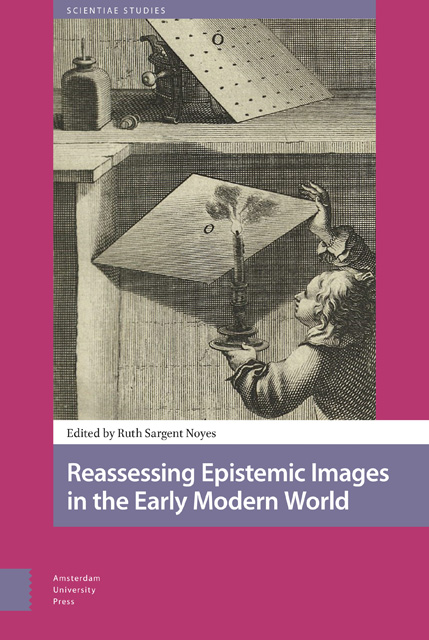Book contents
- Frontmatter
- Dedication
- Table of Contents
- 1 Prologue: For a Metaphorology of Engraving: From Epistemic Images to an Imaged Epistemology
- 2 Introduction: Pittura filosofica: Etching Galileo’s Sunspots and the Discursive Field of Early Modern Epistemic Images
- Part 1 Approaches to Print Matrices
- Part 2 Imprints as Instruments
- Part 3 Imprint, Knowledge, and Affect
- Bibliography
- Index
2 - Introduction: Pittura filosofica: Etching Galileo’s Sunspots and the Discursive Field of Early Modern Epistemic Images
Published online by Cambridge University Press: 15 June 2023
- Frontmatter
- Dedication
- Table of Contents
- 1 Prologue: For a Metaphorology of Engraving: From Epistemic Images to an Imaged Epistemology
- 2 Introduction: Pittura filosofica: Etching Galileo’s Sunspots and the Discursive Field of Early Modern Epistemic Images
- Part 1 Approaches to Print Matrices
- Part 2 Imprints as Instruments
- Part 3 Imprint, Knowledge, and Affect
- Bibliography
- Index
Summary
Abstract
Galileo Galilei’s History and Demonstrations on Solar Spots and Their Properties, a collection of letters on observations of sunspots, came off the Roman presses in spring 1613 with 38 printed illustrations that minutely reproduced Galileo’s telescopic drawings. Printed from etched copperplates by artist Mattheus Greuter, these prints’ production consumed half of the book’s entire budget. This introductory chapter explores the crucial rhetorical and epistemological role that Greuter’s sunspot etchings and the artist’s painstaking methods played in conveying and even constituting Galileo’s controversial Copernican arguments against broader themes throughout essays in the book as whole, with special attention to re-examining the discursive field of early modern epistemic images in recent scholarship.
Keywords: Galileo, Lincean Academy, astronomy, etching, Mattheus Greuter, telescope, sunspots
Ink on Paper: Etching as Sensible Experience
As I mentioned, his Lordship the Marquis of Monticelli sent me your Discourse on the solar spots at the onset of my illness. Because I couldn’t read it myself, I held onto it for a long time to think on it or have a copy made. Since His Holiness [Pope Paul V] needed to show it to certain Cardinals, I just read it by myself, and as much as was possible I considered it carefully, and looked together with the images of the [sun]spots. The first pleasure was this: to see that for many of the days when I myself had looked and noted [the sunspots], your notes compared to mine, allowing that my images did not have so many small mini-spots nor so distinct like your own, because I had not made use of such a perfect [telescope] in observing them [as you did]. The second was to hear the arguments, five it seemed to me, with which Your Lordship sufficiently proved, as far as I am concerned, that the spots are contiguous with the solar body. […] And I believe that they will appear the same to whomever may have even some small understanding of [linear] perspective, or natural judgement.
This passage was written by Giovanni Battista Agucchi, a Bolognese art theorist and collector, prelate and papal courtier, amateur astronomer and Galilean acolyte.
- Type
- Chapter
- Information
- Reassessing Epistemic Images in the Early Modern World , pp. 25 - 56Publisher: Amsterdam University PressPrint publication year: 2022

